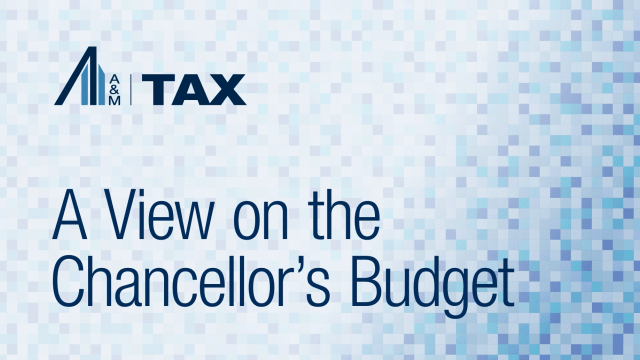Change in Estimate or Correction of an Error?
These eight words, which to most of the world might evoke a yawn, instill fear in many tax practitioners. The realities in which we find ourselves today require that each and every time a tax VP proposes to amend a prior-year return, he/she has to determine if the amendment will result in a material change to tax for a prior year. If the change is material, that VP then needs to determine if the change in tax is the result of a change in an accounting estimate or the correction of an accounting error. This determination is not merely done for curiosity’s sake. Financial statements — shall I say “restatements” — depend on the answer to these questions. If the change to tax is material, and if the change is determined to be the result of a correction of an error, then the VP will need to visit the CFO’s office and explain the need for restating prior years’ financial statements.
Background
The accounting literature at the center of this issue is FASB Accounting Standards Codification (ASC) Section 250. (Perhaps you have heard by now that the FASB unveiled its much anticipated “codification” project in June 2009. The goal of the project as articulated by the FASB is “not intended to change U.S. GAAP or any requirements of the SEC; rather, it is part of FASB’s efforts to reduce the complexity of accounting standards and also to facilitate international convergence.” Interestingly, the first benefit cited by the FASB for creating the ASC is the reduction in the amount of time required to solve an accounting research issue. Maybe that means lower audit bills for our readers. We hope so. Based on proxy statement research that we performed, the component members of the Fortune 500 paid a mind-boggling $4.9 billion to their auditors for audit and audit-related services in 2008. But I digress.)
The principal source component of ASC 250 is former Statement of Financial Accounting Standards (SFAS) 154. As you may recall, SFAS 154 was issued in May 2005, to replace APB 20 and SFAS 3. In pertinent part, SFAS 154 requires “retrospective application to prior periods’ financial statements” for changes in accounting principle. It also requires “restatements” of previously issued financial statements to reflect the correction of an error. SFAS 154 admits that a “restatement” versus a “retrospective application” is a distinction without much difference. However, a change in estimate is accounted for prospectively, which is significantly different from both retrospective application and restatement.
To describe a fact pattern as an error in the recognition, measurement, presentation or disclosure of an item, one of three specified circumstances must exist:
- Mathematical mistakes;
- Mistakes in the application of Generally Accepted Accounting Principles; or
- An oversight or misuse of facts that existed at the time the financial statements were prepared.
Let’s Get Practical
If the matter that needs to be addressed results from a bad formula in an Excel® spreadsheet, my guess is that a “mathematical mistake” has occurred and therefore a restatement is in order if the tax consequence of the mistake is material. (While “materiality” is not the subject of this edition, readers are directed to various Securities and Exchange Commission regulations, and interpretations thereto, including Regulation S-K and S-X.)
If the matter at hand is the result of a flawed interpretation of GAAP, such as an inclusion in a current calculation of an effective tax rate of a tax benefit that has lapsed and not yet been re-enacted, then it is hard to imagine an effective defense against a call for a restatement.
But what about that third category: an oversight or misuse of facts that existed at the time the financial statements were prepared. Is this a “catch-all” category? If not, what factors limit its application?
Let’s consider a few fact patterns.
Situation I: Taxpayer A has monitored recent events regarding several IRS Tier I issues and determined that before he/she takes a return position, it might be best to let some time to pass and see what issues are really at the core of many taxpayer positions. Further, a critical tax case has been docketed with facts believed to have a bearing on a position that a taxpayer may choose to ultimately claim. Suppose then that our Tax VP decides to file an amended return upon the reporting of a favorable court case.
Situation II: Taxpayer B surveys its various business units on an annual basis to learn about activities that may need to be reported in its federal income tax return. A section in this survey addresses activities that may qualify for the Research Tax Credit. One of the taxpayer’s business units consistently provides information that results in the inclusion of wages in the research credit calculation. During an IRS audit, it is learned that these wages included non-taxable fringe benefits, which are clearly not eligible to be counted as a qualified research expense. The elimination of these costs results in a materially lower research credit for the prior years under audit.
Situation III: Similar to Situation II, suppose Taxpayer C claims the research credit, but one of its business units consistently declares that no research is conducted by any of its employees, and so the tax return is consistently prepared without the inclusion of any cost by this business unit. The corporate tax department later learns that while it is true that the business unit conducts no research by it employees, the business unit did contract with another, unrelated party to perform research on its behalf. Upon learning this, the tax department files an amended return claiming this contract research, which results in a material increase in the credit that the taxpayer is entitled to receive.
Is it reasonable for an audit firm to assert that the amended return in Situation I or Situation III, or the IRS audit adjustment in Situation II is tantamount to “a correction of an error”?
As you know, interpretations of accounting literature are not routinely reported to the public, so trying to find something that amounts to “precedent” is an exercise in frustration. Like it or not, most companies find that they are at the mercy of the collective judgment of their audit firm’s accounting principles group and often find that something close to a negotiation with this group is required to resolve a matter such as this.
To argue that the material changes in each of these situations are not “corrections of an error,” it appears to us that you need to determine if there was “an oversight or misuse of facts that existed at the time the financial statements were prepared.”
Let’s break this phrase into its component parts. An “oversight or misuse” implies an affirmative action or inaction that the enterprise, had it known differently, would not have pursued. “Facts that existed” should mean that facts derived from subsequent events should not be controlling. An interesting word that some might want to read into this phrase is “known,” such as “facts that are known to exist.” But it seems to us that such an attempt is probably inappropriate, given the earlier use of the word “oversight,” which itself implies that failing to know a fact that existed constitutes an error. “At the time the financial statements were prepared” refers to those facts that existed and are relevant to the financial statements.
An “oversight” implies that the enterprise would have taken a position had it known certain facts, but that its procedures failed to reveal facts critical to claiming a position. Therefore, it seems to require an active mistake. Facts that could be the subject of this situation include not just those pertinent to the enterprise, such as income and deduction amounts, but also facts applicable to others, such as the fact that penalties are not income tax deductible, or that all research costs as described in Section 174, and not merely qualified research expenditures as described in Section 41, are to be allocated in order to determine foreign-source income.
A “misuse” of facts could either be intentional or unintentional. A deliberate disregard of an important tax requirement could clearly result in a misuse of facts. But an unintentional misuse, perhaps difficult to differentiate from an oversight, is equally problematic. And in the SOX 404 world in which we now live, enterprises are expected to have controls in place that minimize the chances of errors, intentional or not.
Our Answers to the Three Situations Described Above
Situation I: While this enterprise’s facts regarding the tax issue may have been in place when the financial statements were issued, the law and how the IRS was interpreting it were not settled and resolved. Taxpayers are not required to claim a credit or a deduction, even though the law may appear to allow it. While some taxpayers want to be on the vanguard with respect to tax return positions, it seems to us that other taxpayers may prudently wish to delay a decision to claim a deduction until the law becomes more settled. This delay may result in taxpayers not having a full understanding of all of their facts, but we can’t see this as an “oversight” or a “misuse” of facts. So we believe that this situation is better described as a change in estimate.
Situation II: The enterprise claimed what amounts to “book” wages instead of “taxable” wages as required by the relevant tax law. The facts existed at the time the financial statements were prepared, but the business unit reported to the corporate tax department an incorrect amount for eligible wages, and therefore “misused” the facts in its internal reporting. This internal reporting led to a claiming of a tax benefit that was material and (assuming that a benefit was claimed in the effective tax rate for the period relating to the financial statements) a misuse occurred. This situation probably amounts to a classic correction of an error.
Finally, the facts in Situation III appear to be an “oversight” by the enterprise. And given that the taxpayer claims the research credit, it probably can be said that had the taxpayer learned of the oversight earlier, it would have acted differently and reported these costs as eligible for the credit, and hence it would have claimed the benefit earlier. We can see that this could be characterized as an error.
But we should also point out that unlike Situation II, this “error” didn’t result in an underpayment of a tax, but rather an overpayment. Does this matter you might ask? Possibly. Taxpayers are not required to claim benefits if they choose not to. No governmental authority requires a taxpayer to claim a deduction or a credit for which it may be entitled. So, the tax returns will not be regarded as erroneous by the tax authority. They may not object if the taxpayer later chooses to file an amendment and claim the benefit, but no penalty is levied on a taxpayer in this situation.
It is widely known that the effective tax rates for companies vary. Some, perhaps most, of the variance is the result of factual differences, but surely some of the difference is the result of the sophistication of some tax planning among taxpayers. Can it be said that this latter difference constitutes an “error” component? Perhaps the best answer for enterprises in a Situation III circumstance is based on intention. If the enterprise intends to claim a credit, perhaps even does so in another year or in other lines of business, then a failure to claim is an oversight, and therefore an error.
But if an enterprise changes its posture and actively deploys more sophisticated tax planning and reporting, it seems to us that previous reporting was neither a misuse nor oversight. It was just different. And therefore the enterprise cannot be said to have made errors that are now being corrected.
Alvarez & Marsal Taxand Says:
Not all tax return amendments constitute a correction of an error. Carefully parse the guidance to determine if one of the three specified error conditions exists. If one or more conditions exist, you next have to measure materiality. In a future edition, we will explore this concept and provide you with some practical advice.
For More Information on this Topic, Contact:
Layne Albert
Managing Director, Houston
713-547-3602
|
Robert Filip
Managing Director, Seattle
206-664-8910
|
Jose Lamela
Managing Director, Miami
305-704-6710
|
Mark Young
Managing Director, Houston
713-221-3932
|
Other Related Issues:
| 01/27/10 | |
| 12/14/09 | |
| 08/18/08 |
Feedback:
We would like to hear from you.
Disclaimer
As provided in Treasury Department Circular 230, this publication is not intended or written by Alvarez & Marsal Taxand, LLC, (or any Taxand member firm) to be used, and cannot be used, by a client or any other person or entity for the purpose of avoiding tax penalties that may be imposed on any taxpayer.
The information contained herein is of a general nature and based on authorities that are subject to change. Readers are reminded that they should not consider this publication to be a recommendation to undertake any tax position, nor consider the information contained herein to be complete. Before any item or treatment is reported or excluded from reporting on tax returns, financial statements or any other document, for any reason, readers should thoroughly evaluate their specific facts and circumstances, and obtain the advice and assistance of qualified tax advisors. The information reported in this publication may not continue to apply to a reader's situation as a result of changing laws and associated authoritative literature, and readers are reminded to consult with their tax or other professional advisors before determining if any information contained herein remains applicable to their facts and circumstances.
About Alvarez & Marsal Taxand
Alvarez & Marsal Taxand, an affiliate of Alvarez & Marsal (A&M), a leading global professional services firm, is an independent tax group made up of experienced tax professionals dedicated to providing customized tax advice to clients and investors across a broad range of industries. Its professionals extend A&M's commitment to offering clients a choice in advisors who are free from audit-based conflicts of interest, and bring an unyielding commitment to delivering responsive client service. A&M Taxand has offices in major metropolitan markets throughout the U.S., and serves the U.K. from its base in London.
Alvarez & Marsal Taxand is a founding member of Taxand, the first global network of independent tax advisors that provides multinational companies with the premier alternative to Big Four audit firms. Formed in 2005 by a small group of highly respected tax firms, Taxand has grown to more than 2,000 tax professionals, including 300 international partners based in nearly 50 countries.
To learn more, visit www.alvarezandmarsal.com or www.taxand.com.
© Copyright 2010 Alvarez & Marsal Holdings, LLC. All Rights Reserved.
Alvarez & Marsal | 6th Floor | 600 Lexington Avenue | New York | NY | 10022




